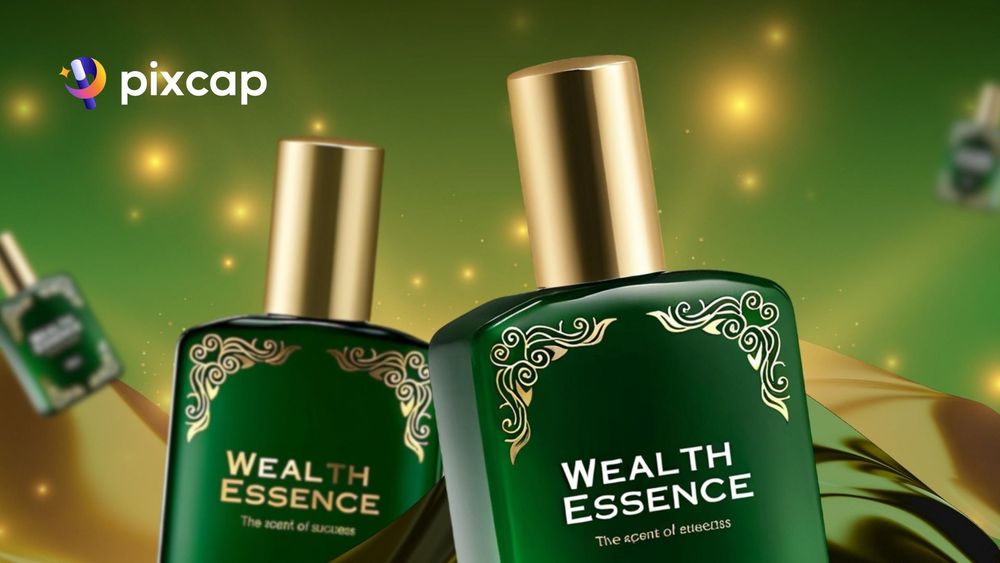Perfume has been an integral part of human culture for centuries. Its enchanting scents have the power to evoke emotions, memories, and even change moods.
In today's highly competitive market, developing a strong brand identity is crucial for success in the perfume industry. With so many different fragrances on the market, it's essential to create a unique and memorable brand that will stand out from the rest.
In this fragrant guide, we'll explore the key elements of developing successful perfume branding. From designing a signature scent to effectively marketing your products, we'll cover everything you need to know to establish your brand.
There are 3 main elements to consider when developing perfume branding: the fragrance, brand identity, and marketing strategy. Let's dive into each of these elements in more detail.
1. The Fragrance
When developing your signature fragrance, there are a few things to consider:
Defining Your Target Audience
The process of defining your target audience involves understanding the specific demographic and psychographic attributes of the potential customers who would be most interested in your perfume. This includes age, gender, interests, values, and lifestyle. You need to answer questions like:
Who are they?
What are their preferences and tastes in fragrances?
What are their buying habits?
How much are they willing to spend on a bottle of perfume?
Understanding your target audience allows you to tailor your branding, fragrance, packaging, and marketing strategy to meet their specific needs and preferences. For example, if your target audience is young professional women, you might choose to develop a sophisticated floral scent, packaged in an elegant bottle, with a marketing campaign that highlights the perfume as a symbol of empowerment and success.
Also, conducting market research, using surveys, focus groups, or social media listening tools, can provide valuable insights into your target audience's preferences and buying behavior. Remember, the more specific you are in defining your target audience, the more effective your branding and marketing efforts will be.
Choosing the Right Notes
The fragrance itself is the heart of your brand and should be carefully crafted to reflect your brand's values, target audience, and desired image. Perfume notes are classified into three categories: top, middle, and base notes. Here's how each one contributes to the overall scent:
Top notes: These are the initial impression of a perfume and last for about 15 minutes after application. They are usually light, fresh, and evaporate quickly.
Middle notes: Also known as heart notes, these emerge a few minutes after the top notes and make up the main body of a fragrance. They usually last for around two hours.
Base notes: These are the final stage of a perfume's scent and can last for up to ten hours. They provide depth and richness to the overall fragrance.
To create a well-balanced perfume, it's important to carefully choose notes that complement each other and align with your brand's image. For example, a romantic brand might opt for floral or fruity notes, while a more edgy brand might go for woody or oriental scents.
2. Brand Identity
Once you have a clear understanding of your target audience and the scent profile of your perfume, it's time to focus on your brand identity. Your brand identity is the visual representation of your brand:
Brand Colors
Colors play a crucial role in branding and can evoke different emotions and associations. When choosing your brand colors, consider the following factors:
Brand values: What do you want your brand to stand for? Choose colors that align with your values.
Target audience: Different colors appeal to different demographics. Consider what would resonate with your target audience.
Competitors: What colors are your competitors using? You want to stand out from the crowd, so choose colors that differentiate you.
Industry: Different industries have different color trends. Research what colors are commonly used in the fragrance industry and decide if you want to follow or break away from them.
Alright, let's take this as an example. Say you're launching a luxury perfume line targeted towards affluent women in their 30s and 40s. Your brand values are sophistication, elegance, and timelessness. Based on this, you might choose a color palette of muted pastels or deep jewel tones.
Logo
The product logo serves as a clear and recognizable visual representation of your brand. Whether you choose to emphasize it or incorporate it as imagery, having a distinct symbol helps customers associate it with your perfume product. There are countless ideas to create a well-crafted logo that encapsulates your brand essence, identity, and personality.
However, designing the perfect perfume logo for branding is no easy task. It requires careful consideration and attention to detail. While some famous perfume brands opt for simple and memorable logos, it's important to avoid common styles and imagery to maintain authenticity and uniqueness.
Creating a logo goes beyond simply using a generic bottle with text. It's crucial to leverage your knowledge of the perfume brand to craft a logo that is specific, unique, and creative. Logos can be used for both parent brands and individual branding of perfume, allowing for versatility and coverage of multiple products. By maintaining consistency in your perfume logo design, your company presents a cohesive image.
Typography
When it comes to perfume logo design, fonts play a significant role. The font you choose can make or break the overall look of your brand's identity.
For luxury brands, serif fonts are usually preferred as they convey sophistication and elegance. Whereas sans-serif fonts give off a more modern and sleek feel.
It's essential to balance the visual appeal with legibility when selecting a font for your logo. Avoid using overly stylized or complicated fonts that may be difficult to read and remember.
Packaging
Similar to the logo, packaging design is an essential element of a perfume brand's identity. The packaging should complement the logo and reflect the brand's essence.
Consider incorporating elements such as color, texture, and shape that align with your brand image. For example, if your perfume exudes femininity and romance, opt for soft pastel colors and delicate floral patterns on the packaging.
The bottle itself also plays a crucial role in the overall packaging design. It should be unique, eye-catching, and easy to hold. The bottle's shape and size can also contribute to the consumer's perception of the scent inside.
And don't forget the box that houses the perfume bottle. The purpose of the box is to provide an enjoyable experience for the audience. It's the first thing that the buyer interacts with and compares. So, make sure you have something that makes your perfume branding unique. Think about the emotions you want them to feel when they touch, open, unwrap, and use the cologne. Ensure that it leaves a lasting impression.
3. Marketing Strategy
A successful perfume branding strategy is not complete without a well-planned marketing plan. It's essential to spread the word about your brand and products to attract potential customers.
Here are some effective marketing strategies for perfume brands:
Social Media Marketing
With the rise of social media, it's crucial for perfume brands to have a strong presence on platforms like Instagram, Facebook, and Twitter. These platforms allow you to showcase your brand story, engage with your audience, and promote your products.
Utilize visually appealing content such as sale post, high-quality product photos, behind-the-scenes shots of the production process, and user-generated content to entice your followers. Collaborating with influencers and running targeted ads to reach a wider audience can also be highly effective.


Need a design tool to create social media posts? Try Pixcap tool for marketing design
Influencer Partnerships
Partnering with influencers is a great way to reach potential customers who trust and follow their recommendations.
Choose influencers whose personal brand aligns with yours and have an engaged following in the beauty or luxury industry. You can collaborate on product reviews, sponsored content, or even create a signature scent together.
Email Marketing
Email marketing is a powerful tool to stay connected with your audience and keep them updated on new products, promotions, and events.
It's important to have an email list of interested subscribers who have opted-in to receive updates from your brand. You can offer exclusive discounts or sneak peeks to incentivize sign-ups. Personalize your emails and make them visually appealing to catch the reader's attention.
Learn more about useful tools for your branding campaigns in our Branding Tools article.
Events and Experiences
Hosting events or creating unique experiences for your customers is a great way to create a buzz around your brand. These could include product launches, pop-up shops, or workshops on perfume making.
Make sure to promote these events through social media, email marketing, and collaborations with influencers. This will not only attract attendees but also generate interest from those who aren't able to attend.
Customer Loyalty Program
Rewarding loyal customers is essential in building a strong brand following. Consider implementing a customer loyalty program that offers perks such as free samples, exclusive discounts, or early access to new products.
Not only does this make your customers feel appreciated, but it also encourages them to continue purchasing from your brand. You can even tailor the rewards specifically for perfume purchases, such as a free travel-sized bottle after a certain number of purchases.
Customer Reviews and Testimonials
Word-of-mouth is one of the most effective forms of marketing. Encourage your customers to leave reviews and testimonials on your website or social media pages. These reviews act as social proof and can help sway potential customers into making a purchase.
You can also share these reviews on your marketing materials or collaborate with influencers to showcase their experiences with your brand.
Conclusion
In conclusion, branding perfume requires a combination of creativity, strategic planning, and understanding the target audience.
The above steps are practical ways to promote your perfume brand, but it's important to continually assess and adapt your marketing strategies as needed. With dedication and perseverance, you can successfully establish a strong brand presence in the competitive perfume market.
Frequently Asked Questions
1. How much does it cost to make a perfume brand?
The number can range from $10000 to hundreds of thousands depending on the production scale, branding, and marketing efforts.
2. Is it necessary to have a physical store for a perfume brand?
No, with the rise of e-commerce and online shopping, having an online presence can be just as effective (and even more cost-efficient) for a perfume brand.
3. How to start perfume brand?
You need to first conduct thorough market research and identify your target audience. Then, develop a unique brand concept and create your signature scent. Once you have your product ready, focus on branding and marketing strategies to reach your target audience and establish a strong presence in the market.




